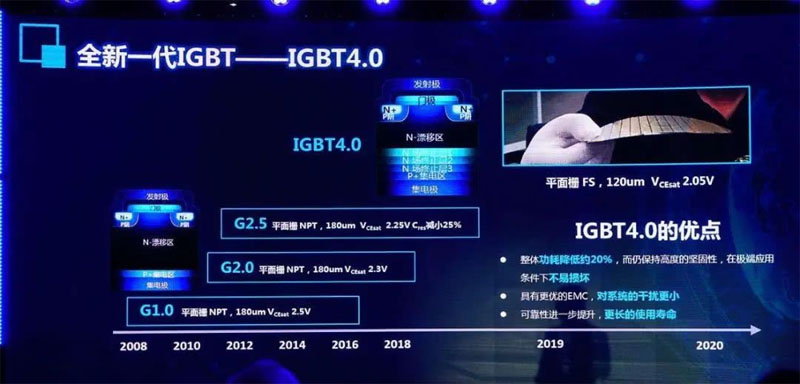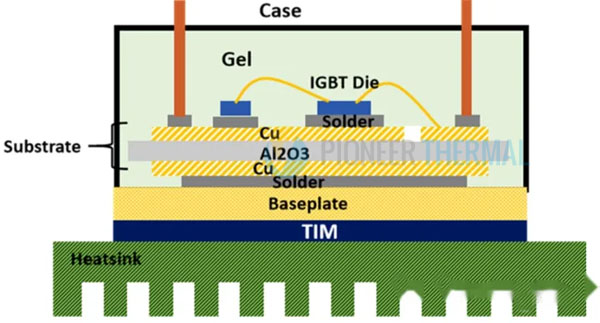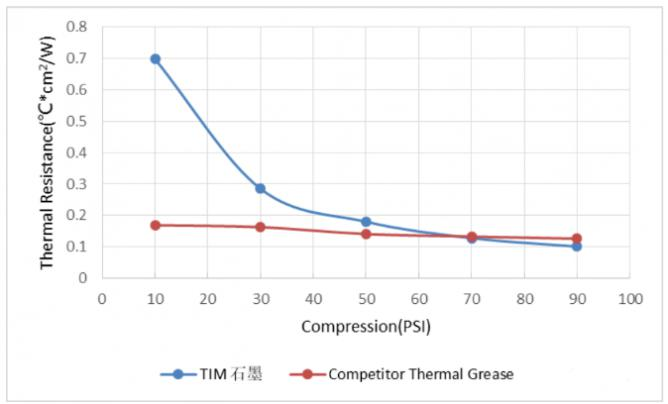The IGBT Power Module Heat Sink is a power device, which has the advantages of low driving voltage, strong power processing capability, and high switching frequency. But it is also inseparable from thermal characteristics. The weakness of power semiconductor modules is overvoltage and overheating. Therefore, its ability to handle heat will limit its high-power applications.

1. Thermal management in IGBT power module heat sink
IGBT generates a lot of heat due to its high power density. The air gap existing between the power device and the heat sink will produce a very large contact thermal resistance, significantly increasing the temperature difference between the two interfaces. In order to ensure that IGBT modules work efficiently, safely and stably, thermal management technology is also the most important link in the design and application of new products.
A method generally used to reduce interface contact thermal resistance is to fill it with soft thermally conductive materials, namely thermal interface materials (TIM). Reasonable selection of TIM should not only consider its thermal conductivity, but also take into account the production process, maintenance operability and long-term reliability. The 10°C rule shows that for every 10°C decrease in device temperature, reliability doubles. At present, IGBT failure due to thermal runaway is the most common phenomenon. It can be said that most of the failures of IGBT power semiconductor modules are related to heat. Therefore, reliable thermal management is a top priority to ensure the long-term use of IGBTs. The reliability of IGBT has also become a hot topic in current industry research.
2. Efficient thermal management methods for IGBT modules
From a thermal design perspective, thermal resistance can be reduced from three aspects: packaging material, TIM, and heat sink. At present, the main heat dissipation solutions for IGBT are air cooling and liquid cooling. The IGBT is installed directly on the radiator. The heat of the IGBT module is directly transferred to the radiator shell through the TIM, and then the heat is carried away through air cooling or liquid cooling forced convection.

In recent years, higher requirements have been put forward for TIMs for IGBT: low thermal resistance and long-term reliability. In order to ensure customers' heat dissipation needs for different IGBT modules, we propose multiple options of high-reliability heat dissipation solutions based on customers' different application needs.
● 21-6series TIM graphite
Guaranteed IGBT module, long-lasting and reliable without maintenance
21-6series series TIM graphite series is low-density graphite with certain compression properties. It has been widely used by customers because of its long-term reliability. Engineers conducted a compression-thermal resistance test comparison using 200μm TIM graphite and 3.3W/m·K conventional Thermal Grease. Under a compressive stress of 70 PSI, TIM graphite has lower thermal resistance, better thermal conductivity, and long-term performance. High and low temperature resistance. It can significantly reduce the customer's later maintenance costs.
At the same time, the horizontal thermal diffusion coefficient of TIM graphite reaches 900 mm²/s, and it can be die-cut into specific shapes for easy installation. It has now achieved automated assembly at end customers.

Thermal Resistance vs Compression
● 21-4series series anti-“Pump-out” thermal conductive silicone grease protects the IGBT power module heat sink and ensures safe and stable operation.
Thermal conductive silicone grease was first used as TIM in IGBT modules due to its good surface wettability and low contact thermal resistance. However, due to the thermal expansion and contraction of power devices during long-term operation, based on past experience in using traditional thermal grease, there will be inherent material migration, which is the so-called "pump-out" problem. This creates an air gap between the IGBT module and the radiator, and increases the contact thermal resistance. On the other hand, traditional silicone grease will also cause the problem of sanding and drying due to the volatilization of small molecular silicone oil, thus affecting the heat dissipation effect. It is also difficult to clean in later maintenance and the thickness is uncontrollable. Therefore, traditional silicone grease heat dissipation solutions will also cause customers to have doubts about the reliability and performance of IGBT modules.
Anti-"Pump-out" thermal grease series products perfectly solve the problem of traditional thermal grease pumps and ensure more effective heat dissipation and reliable operation of IGBT modules.
● 21-7series series of thermally conductive phase change materials protect IGBT modules and release new options for latent heat
Thermal conductive phase change materials are materials that change shape as temperature changes. The 21-7 series of thermally conductive phase change materials remain solid at room temperature until the operating heat of the IGBT module device causes it to "melt" and infiltrate the entire interface. Its extremely low thermal resistance can efficiently dissipate heat. When it is lower than the phase change temperature, it turns into a solid state again, which can avoid the risk of overflow like thermal conductive silicone grease.
Continue to explore new formulations of thermal interface materials to meet new challenges in thermal conductivity of IGBT modules, ensure that the equipment has stable thermal performance during its life cycle, and develop overall thermal management solutions that are more efficient in heat dissipation and reliable in operation.


 +86-18902844286
+86-18902844286
 E-mail
E-mail
